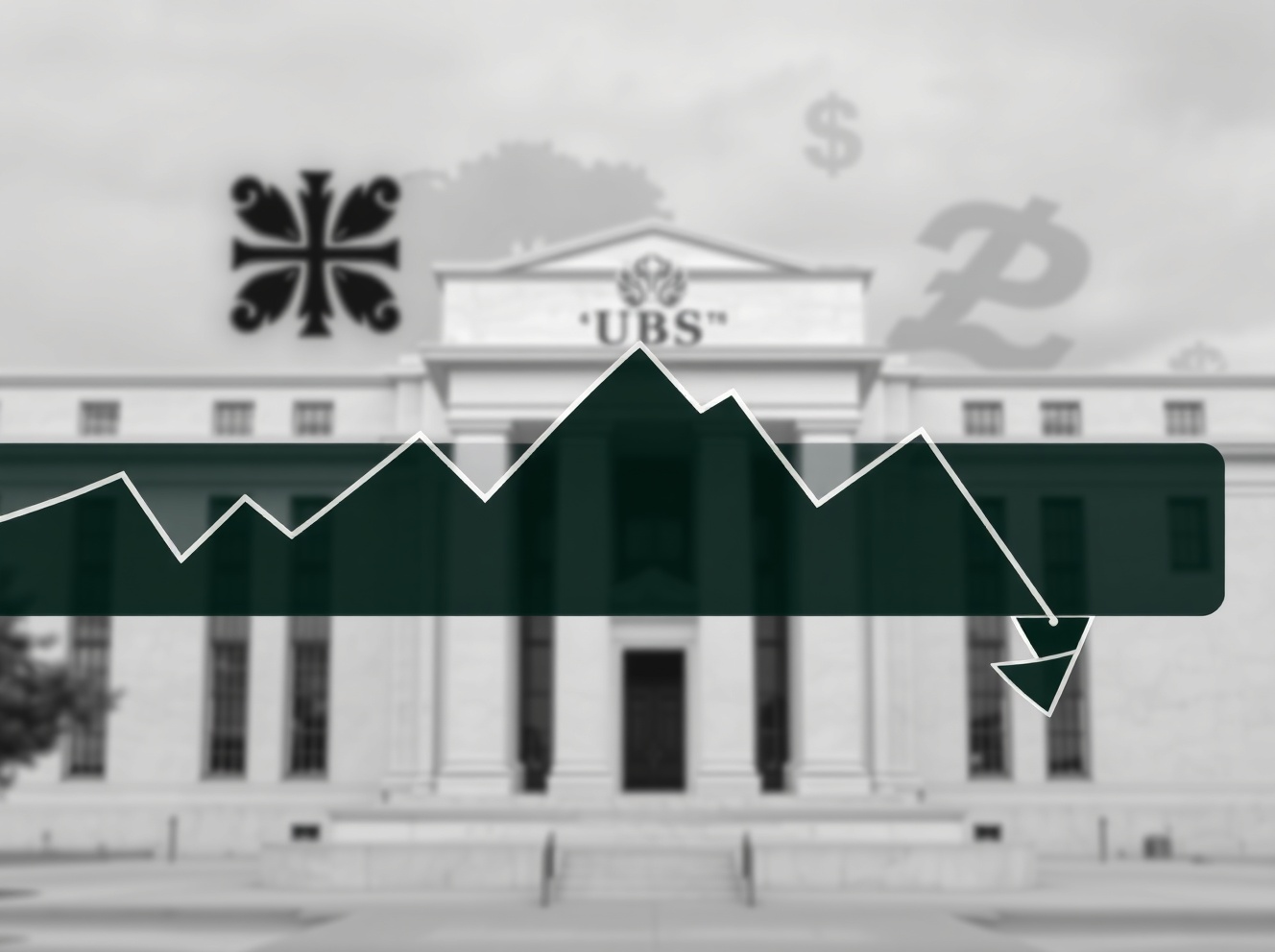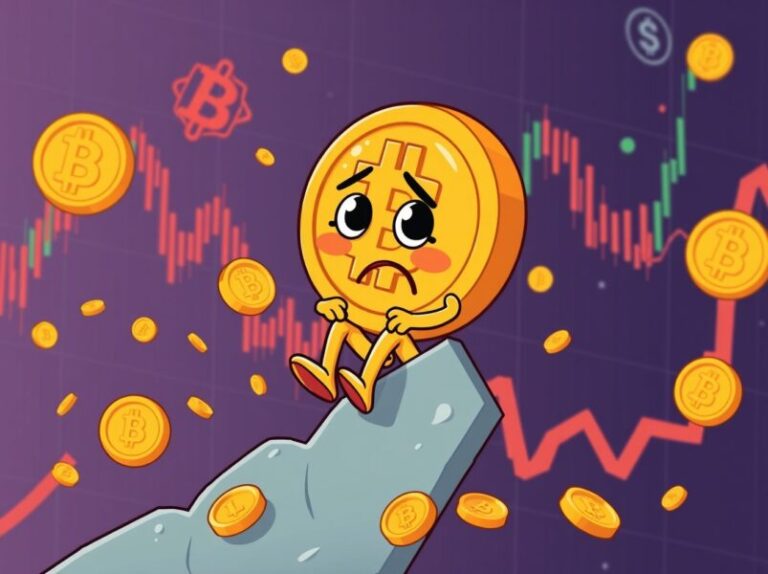BitcoinWorld US Dollar Outlook: UBS Predicts Critical Bearish Shift Post-FOMC In the dynamic world of global finance, every major announcement from central banks sends ripples across markets, impacting everything from commodity prices to cryptocurrency valuations. As the Federal Open Market Committee (FOMC) meeting approaches, all eyes are on the US Dollar Outlook, especially after leading …
US Dollar Outlook: UBS Predicts Critical Bearish Shift Post-FOMC

BitcoinWorld

US Dollar Outlook: UBS Predicts Critical Bearish Shift Post-FOMC
In the dynamic world of global finance, every major announcement from central banks sends ripples across markets, impacting everything from commodity prices to cryptocurrency valuations. As the Federal Open Market Committee (FOMC) meeting approaches, all eyes are on the US Dollar Outlook, especially after leading financial institutions like UBS have shared their definitive, and notably bearish, perspectives. For crypto investors, understanding these macro shifts is paramount, as a weakening dollar can sometimes signal a ‘risk-on’ environment, potentially benefiting digital assets.
Why is UBS So Bearish on the US Dollar Ahead of the FOMC Meeting?
UBS, a global banking giant, has publicly maintained a bearish stance on the US Dollar (USD) as the highly anticipated FOMC Meeting looms. This isn’t just a fleeting observation; it’s a strategic forecast built on a comprehensive analysis of economic indicators, monetary policy expectations, and global market dynamics. Their conviction suggests that the current strength of the dollar might be unsustainable, especially when confronted with potential shifts in the Federal Reserve’s stance.
Several factors contribute to this critical UBS Forecast:
- Shifting Interest Rate Expectations: The market is increasingly pricing in potential rate cuts later in the year, or at least a pause in rate hikes. If the Fed signals a dovish pivot, even subtly, it could erode the dollar’s yield advantage.
- Global Economic Rebalancing: As other major economies, particularly in Europe and Asia, show signs of recovery or tightening monetary policy, the relative attractiveness of the dollar could diminish.
- Inflationary Pressures: While inflation has been a key driver for aggressive Fed action, signs of easing inflation could reduce the urgency for further rate hikes, weakening the dollar’s support.
This collective outlook forms the bedrock of UBS’s bearish sentiment, advising investors to prepare for a potential depreciation of the greenback.
Understanding the FOMC Meeting: What Drives Interest Rate Decisions?
The FOMC Meeting is arguably the most influential event in global finance. Comprising members of the Federal Reserve Board of Governors and presidents of the Federal Reserve Banks, the FOMC meets eight times a year to discuss and make crucial Interest Rate Decisions. These decisions, particularly regarding the federal funds rate, directly impact borrowing costs, consumer spending, and ultimately, the valuation of the US Dollar.
The FOMC’s decisions are not arbitrary; they are meticulously crafted based on a dual mandate:
- Maximum Employment: The Fed aims to foster employment conditions consistent with its assessment of the economy’s long-run potential.
- Price Stability: This typically translates to maintaining inflation around a target of 2%.
Key economic data points heavily scrutinized by the FOMC include:
- Inflation Reports: Consumer Price Index (CPI), Personal Consumption Expenditures (PCE).
- Employment Data: Non-farm payrolls, unemployment rate, wage growth.
- Economic Growth: Gross Domestic Product (GDP) figures.
- Consumer Sentiment and Spending: Retail sales, consumer confidence surveys.
Any deviation from expected data, or any hawkish or dovish commentary from Fed officials, can send immediate shockwaves through the Currency Market Analysis and beyond.
How Do Interest Rate Decisions Influence the US Dollar Outlook?
The relationship between Interest Rate Decisions and the US Dollar Outlook is fundamental. When the Federal Reserve raises interest rates, it generally makes dollar-denominated assets (like US Treasury bonds) more attractive to foreign investors. This increased demand for US assets requires investors to buy US Dollars, thereby strengthening the currency. Conversely, when the Fed signals or implements rate cuts, the dollar’s appeal can diminish, leading to depreciation.
Consider the following dynamics:
- Yield Differential: Higher US interest rates compared to other major economies create a positive yield differential, attracting capital inflows.
- Carry Trade: Investors might borrow in low-interest-rate currencies and invest in high-interest-rate currencies, creating demand for the latter.
- Economic Confidence: Rate hikes often signal confidence in the economy’s ability to absorb higher borrowing costs, which can also bolster the dollar.
UBS’s bearish stance anticipates that the Fed’s future actions or rhetoric will likely lean towards less aggressive tightening, or even easing, thereby eroding the dollar’s current yield advantage and impacting its overall strength.
Navigating the Currency Market Analysis: What Does a Bearish Dollar Mean for Investors?
A bearish US Dollar Outlook, as predicted by UBS, carries significant implications across various asset classes, requiring a nuanced Currency Market Analysis from investors. For those in the cryptocurrency space, a weaker dollar can sometimes correlate with a stronger appetite for riskier assets.
Potential Impacts:
| Asset Class | Potential Impact of Weaker USD | Reasoning |
|---|---|---|
| Commodities (e.g., Gold, Oil) | Generally rise | Commodities are often priced in USD. A weaker dollar makes them cheaper for holders of other currencies, increasing demand. |
| Equities (Non-US) | May rise | US investors’ foreign holdings become more valuable when converted back to a weaker dollar. Non-US companies’ exports to the US become more competitive. |
| Emerging Market Currencies | May strengthen | Reduced pressure from a strong dollar, potentially leading to capital inflows and less debt servicing burden for dollar-denominated debt. |
| Cryptocurrencies | Potential for upside | Often seen as alternative assets or ‘digital gold’. A weaker dollar can push investors towards assets perceived as inflation hedges or those with higher growth potential in a ‘risk-on’ environment. |
Actionable Insights:
- Diversification: Consider diversifying portfolios beyond dollar-denominated assets.
- Hedging Strategies: For businesses with significant dollar exposure, hedging against currency fluctuations might be prudent.
- Commodity Exposure: Increased allocation to commodities like gold could act as a hedge against dollar weakness.
- Monitor Cross-Currency Pairs: Pay close attention to EUR/USD, GBP/USD, and USD/JPY, as these pairs will reflect the dollar’s movement most directly.
The UBS Forecast serves as a crucial signal for investors to re-evaluate their positions and adjust strategies accordingly.
The UBS Forecast: Historical Precedent and Future Trajectories
The UBS Forecast for a bearish dollar is not made in a vacuum; it draws on historical precedents where shifts in monetary policy or global economic conditions have significantly altered the dollar’s trajectory. Historically, periods of slowing US economic growth relative to other major economies, or a sustained dovish pivot by the Federal Reserve, have often led to dollar depreciation.
Past Cycles and Lessons Learned:
- Early 2000s: Following the dot-com bubble and subsequent Fed rate cuts, the dollar experienced a prolonged period of weakness.
- Post-2008 Financial Crisis: While initially a safe haven, once global recovery began and other central banks began normalizing policy, the dollar’s rally faced headwinds.
- Mid-2010s: The ‘taper tantrum’ and subsequent rate hike cycle provided strong support for the dollar, demonstrating the power of monetary policy divergence.
Looking ahead, the future trajectory of the US Dollar Outlook hinges on several key variables:
- Inflation’s Path: Will inflation truly recede to the Fed’s target, or will it prove more persistent?
- Global Growth: How strong will the economic recovery be in Europe, China, and other regions? Stronger global growth could reduce reliance on the US economy as a primary driver.
- Geopolitical Events: Unexpected geopolitical shifts can always trigger safe-haven demand for the dollar, temporarily overriding fundamental weaknesses.
The expertise behind the UBS Forecast suggests that these factors are aligning to create a challenging environment for the dollar’s current strength.
Challenges and Counterarguments to a Bearish US Dollar Outlook
While UBS presents a compelling case for a bearish US Dollar Outlook, it is important to consider potential challenges and counterarguments. Financial markets are complex, and no forecast is without its risks or alternative scenarios.
Factors that could support the US Dollar:
- Persistent Inflation: If inflation proves stickier than anticipated, forcing the Fed to maintain higher Interest Rate Decisions for longer, the dollar could find renewed support.
- Global Economic Slowdown: Should other major economies face unexpected downturns or recessions, the US Dollar could once again act as a safe-haven asset, attracting capital flows despite its yield disadvantage.
- Unexpected Geopolitical Shocks: Major global crises often lead to a flight to safety, with the dollar typically being the primary beneficiary.
- Stronger-than-Expected US Economic Data: If the US economy continues to outperform expectations, it could delay any dovish pivot from the Fed, keeping the dollar stronger.
These counterpoints highlight the inherent uncertainty in Currency Market Analysis and underscore the need for investors to remain agile and monitor incoming data closely, even when considering a strong UBS Forecast.
Concluding Thoughts: Preparing for the Post-FOMC Landscape
The impending FOMC Meeting stands as a pivotal event that will undoubtedly shape the near-term US Dollar Outlook. UBS’s clear and consistent bearish UBS Forecast signals a potential inflection point for the greenback, driven by evolving Interest Rate Decisions and broader economic trends. For investors, particularly those in the volatile cryptocurrency markets, understanding these macro shifts is not merely academic; it is crucial for strategic positioning.
While the dollar’s journey ahead is fraught with variables, the weight of a major institution like UBS backing a bearish view warrants serious consideration. Whether the dollar experiences a gradual decline or a more abrupt shift, preparedness through informed Currency Market Analysis and diversified strategies will be key to navigating the post-FOMC landscape successfully. The next few weeks promise to be exceptionally revealing for global currency markets.
To learn more about the latest Forex market trends, explore our article on key developments shaping the US Dollar’s liquidity and institutional adoption.
This post US Dollar Outlook: UBS Predicts Critical Bearish Shift Post-FOMC first appeared on BitcoinWorld.









